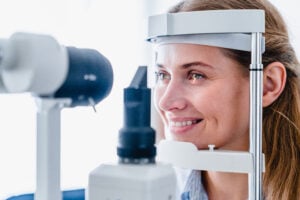The COVID-19 pandemic disrupted elective treatments on the NHS, resulting in a record patient backlog. As of September 2021, there were 5.6 million NHS patients waiting for planned surgeries such as hip and knee replacements, cataract surgery, cardiovascular procedures and more.
Despite the UK having left the European Union on January 31 in 2020, it is still possible for UK residents to receive healthcare treatment abroad and for the NHS to reimburse the cost.
In many cases, the public health care body won’t pay 100% of the medical treatment, but it will fund a substantial part of it.
As well as the EU, other countries covered where NHS-funded treatment may be available include Norway, Iceland, Liechtenstein or Switzerland.
To be eligible for this, UK citizens must go down one of either two available funding routes. The first is a planned treatment route (S2), and the second is when you are reimbursed on your return (EU Directive route).
Option 1: S2 route for funding medical treatment overseas
To qualify for funded treatment under the S2 route, there are specific criteria that you must fulfill. This includes:
- Being resident in England (Scotland, Wales and N Ireland govern their own NHS healthcare arrangements)
- The treatment being of an elective nature, the kind you would normally receive on the NHS in England and not emergency treatment
- Written evidence of a full clinical assessment and why the doctor believes your treatment is necessary i.e. that it can’t be provided at home in England within a reasonable timescale
You won’t receive a reply from the NHS until at least 20 working days. If rejected, there is an appeals process.
If accepted, then you will be sent an S2 application form for funding. This must be filled out before treatment as there is no retrospective funding available. The application should include evidence that you fulfil the eligibility criteria, details of the treatment, name of the provider, date of treatment and costs. Your national insurance number should also be included. The email for correspondence is england.europeanhealthcare@nhs.net
Arrangements for treatment abroad
Those interested in seeking treatment abroad (under the S2 route) must do their research and seek out the treatment themselves, in addition to making their own travel arrangements. The NHS doesn’t fund travel abroad and accommodation.
It will also be necessary to obtain specialist medical insurance cover since medical care won’t be covered under a standard travel insurance policy.
Medical tourism platforms such as Medical Travel Market can be a great place to start researching international healthcare treatment options.
Option 2: European directive route for treatment overseas
This route is similar to the S2 route in the sense that you can ‘buy’ health treatment in a European Economic Area (EEA) country – excluding Switzerland – then have it reimbursed by the NHS should you fit their eligibility criteria.
If you are successful in receiving money back, the amount will be up to the cost of the same treatment on the NHS. You may not get the complete amount back.
Where the European Directive route differs markedly from the S2 option is that it also covers private treatment. It’s a form of reimbursement, so you pay upfront for your treatment and apply for reimbursement when you return to the UK.
Reasons for refusal
You may not qualify for reimbursement if your application is for a treatment that requires prior approval. NHS England may still refuse your application if:
- Your treatment makes you a risk to others
- The treatment itself poses a risk to you
- The healthcare provider has a bad reputation
- The treatment can be done on the NHS within a reasonable and safe timeframe
Global Health Insurance Card
It may also be possible to get the money back for state treatment (which wasn’t planned beforehand) using a UK Global Health Insurance Card (GHIC). This replaces the previous European Health Insurance Card (EHIC).
It means that you can receive free or part-funded medical treatment in any European country (e.g. in some countries, such as France, citizens pay a percentage of their medical care). If the country you receive treatment in doesn’t charge for medical care then, as a UK citizen, you won’t have to pay for it either.
Under this route, you can claim for treatment that is already available on the NHS. However, you can’t claim for prescription charges, travel and accommodation.
You apply for reimbursement by filling out an EU Directive application form. In addition to your national insurance number, you must include dates of the treatment, costs, receipts and proof of payment. The email to get in touch with the team is the same as for the S2 form: england.europeanhealthcare@nhs.net.
Again, you can expect to wait at least 20 days before hearing anything, and it can then take a further 30 days for the payment to come through.
Useful contacts
You can find out about healthcare in each European Country under a national contact point scheme. The UK government also provides guidance on contacting the health services for individual countries for UK citizens living there.
Medical Travel Market will soon be launching agency services to connect you with the best international healthcare providers. Sign up to stay informed.














